| Previous
Page |
PCLinuxOS
Magazine |
PCLinuxOS |
Article List |
Disclaimer |
Next Page |
An Interview With Perberos, The Founder Of MATE |
|
by Ariel Torres
Introduction PCLinuxOS users are fortunate to have MATE as a choice of desktop environment. MATE is a fork of the venerable GNOME 2, which was one of the most widely used Linux desktops for years. When its developers transitioned to the new GNOME 3 in April 2011, controversy arose and some users roundly criticized its interface, arguing that it was more geared toward mobile devices -- tablets and smartphones -- than PCs. MATE aims to preserve the traditional desktop metaphor and provide a simple, efficient, stable DE which is light on system resources and can run on older, less powerful hardware. In Austin, Texas, Reglue (Recycled Electronics and GNU/Linux Used for Education, formerly known as the HeliOS Project) gives free Linux computers to underprivileged children and their families; a MATE respin is one of two distros they install on their refurbished computers.1 This DE also appeals to enterprise customers who want a lean desktop for remote use cases, e.g., remote terminal services at scale using solutions such as X2Go. Another project goal is to continually update the codebase, so it will continue to work on modern Linux distributions. This represents a challenge for a project with limited manpower and no wealthy corporate sponsors. However, MATE is finding new contributors and its future looks secure. MATE has become an international project; its core team is composed of six developers from five different countries: Stefano Karapetsas (Italy)2 Martin Wimpress (Great Britain); Wolfgang Ulbrich (Germany); Vlad Orlov (Russia); Clement Lefebvre (France); and Mike Gabriel (Germany). Amazingly, though, MATE began as a solo effort by an Argentine developer named Germán Perugorría. In light of its South American roots, MATE is named after the South American plant yerba mate (Ilex paraguariensis), a type of holly whose leaves contain caffeine, and the tea-like infusion made from the herb. Therefore the correct pronunciation of this DE is "mah-tay" rather than "mait." (Martin Wimpress coined the handy mnemonic "Enjoy your MATE with a nice mug of latte."3) 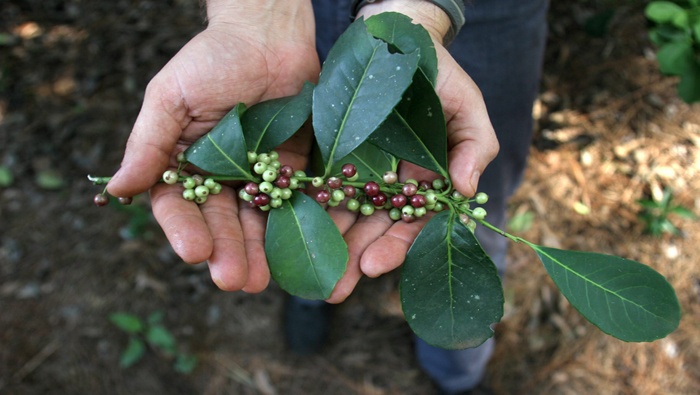 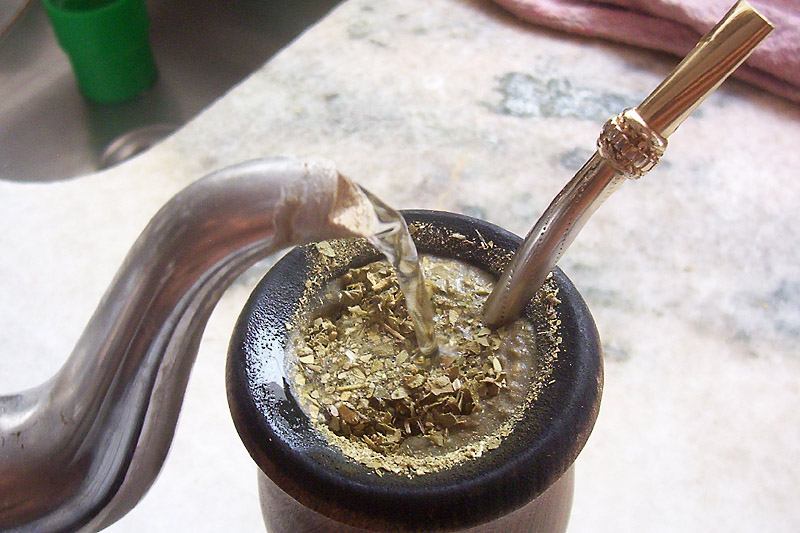 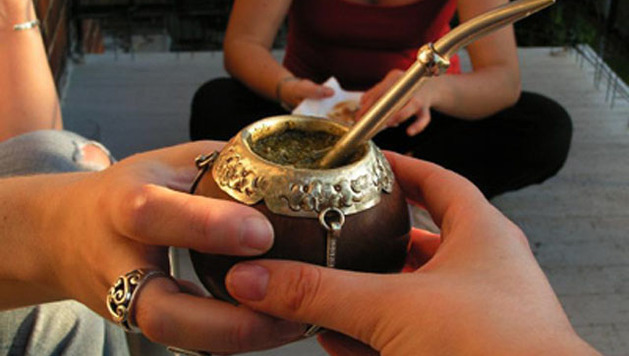 Top Image: The Yerba Mate pant, in its unprocessed form. Middle Image: Making a tea from the dried Yerba Mate leaves. Bottom Image: The sharing of the Yerba Mate tea among friends Another indication of MATE's pedigree is that many of its applications have adopted Spanish names, such as Caja ('box', the file manager), Pluma ('quill, feather', the text editor), Atril ('lectern', the document viewer), Engrampa ('staple', the archive manager), Marco ('frame', the window manager), Mozo ('waiter', the menu editor). The interview below originally appeared in La Nación, an Argentine daily newspaper, and was conducted by Ariel Torres4. I stumbled upon it while researching the history of the MATE project and thought it might be a worthwhile contribution to our community magazine. Although readers could get the gist of the original article by running it through an online service (such as Google Translate), as we know, automated translations can be inconsistent and of mediocre quality. My academic background is in Spanish/Latin American literature, so I felt confident that I could produce a more accurate, nuanced version than a machine translation engine. I am very grateful to both Mr. Torres and Perberos for granting me permission to translate this interview. Interview The MATE project founder is Germán Perugorría, age 30, who was born and lives in Cipolletti, in the Río Negro Province of Argentina.5 In the free software community, Germán is known by his nickname Perberos; in fact he used that nick earlier, because he had developed an online gaming platform when he was 23 years old. The first thing Germán said when I proposed an interview was that he preferred to not talk about himself, but about his project. However, as is often the case, his work reveals a lot about him, as we will see shortly. 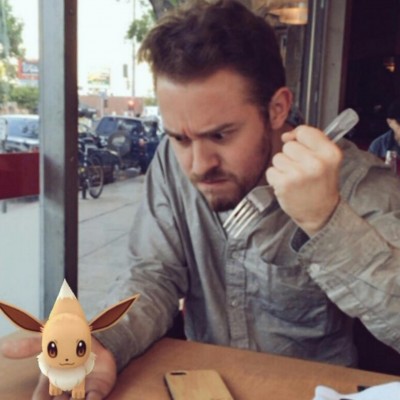 At first I thought that MATE meant "dull."6 It seemed odd, because it is a very attractive DE. Why did you call it MATE? Because of the philosophy behind preparing mate, its culture of sharing, and because of how primitive it is, yet at the same time its efficiency. How did you start programming? My vocation for technology began at an early age. I've always loved video games. I learned a lot from them, including English. I slowly got closer to the world of programming through sandbox-style creative and building games, music, painting. I've done a lot, read a lot, reviewed blogs, been active in forums, experimented, hacked, created. Do you earn a living from programming?Unfortunately, no, if you are referring to financial support. But it fuels my passion to create. Currently, my biggest obsession is programming in C; that is what helped me start the MATE project. How was the project born? It arose from my need to not lose the GNOME 2 desktop environment. I felt very sad to see it disappearing. Then I started collecting everything I could, and after six months I already had something solid. When was that? In 2011.8 And they designated it as the default Mint desktop environment in May 2012. Did they contact you? Yes, in mid-2011, the founder of Linux Mint, Clem (Clement Lefebvre), contacted me; he was interested in the project. That's when, together with Stefano-k (Stefano Karapetsas), the website was assembled, the documentation, and all that. Many people helped--people with whom I didn't have the chance to speak. You must have been excited when Mint contacted you, right? Yes, I was very excited, although Mint wasn't the first distro to offer MATE. I think Salix was the first. Tell me how you developed MATE, what tools you used, what is the process of creating something like that. I must confess that I'm a hacker and I like the trial and error method. In the advanced stages of development, I always joked that I had no idea what I was doing, calling up solutions a bit like magic, without giving any details of that. Perhaps out of laziness (laughs). What would a "magic solution" be? When you write code without fully knowing how it works, but it works? Yes, or when you change the location of code and the program runs. In any case, MATE must contain many lines of code, right? MATE would be nothing without the GNOME project, which was written by thousands of people. I am very grateful to all those people. Gnome 2 in particular. Yes, the version before the one in which they changed their design, and geared it toward tablets. What specifically was your contribution? MATE is clear, pretty and uses little memory. That's exactly what I planned when I imagined MATE, and what I really did was take all the basic code needed to run a desktop environment, updated the code and adapted it to the new versions of the libraries. GNU/Linux is a fairly delicate ecosystem; if one library is broken, all the programs linked to it will also break. You also created applications such as Engrampa (the archive manager) or Pluma (the text editor). Pluma is a fork of Gedit, the default editor in GNOME, and Engrampa is a fork of Fileroller. Did you change anything in those applications? I'd be lying if I said "yes" or "no," because reading so much code causes one to forget certain things. Was the goal of your project to save GNOME 2? Partly yes, although one could simply choose to use GNOME 3's Fallback mode, or switch to Xfce 4. What upset me was that as the new GNOME evolved, backwards compatibility was lost. What would you say is the difference between MATE and options as Xfce 4, KDE or GNOME 3 in Fallback mode? Xfce is a strange environment that is too loosely coupled. Its CDE model9 is not very attractive. GNOME 3, for some reason, planned its release without a traditional mode, eliminating it, to stop developing it. And KDE is too heavy for my taste. Your aim was to keep alive a desktop environment which is traditional, plain and simple. Yes, I also wanted to learn what a DE was like on the inside, how it was compiled, how it was written, how it was designed. Where did you write your code? Did you use an integrated development environment? The funny thing is that I did everything within a console. I spent the first months without seeing X.Org. Really? You wrote code in a terminal? Yes, I used nano. 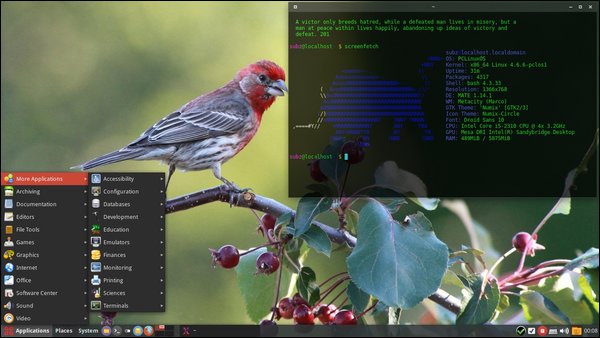 Why not something more user-friendly? Masochism maybe? (Laughs). How does one create a desktop environment for Linux? I began to rebuild it from the bottom up. What does "from the bottom up" mean? As I progressed, I approached the graphical environment. Like when you construct a building, you see the pillars and with that as a foundation, you continue building. What would the pillars be in this case? The GNU tools, the Linux kernel and X.Org libraries, GLib, GTK, etc.. GNOME was the bricks and cement. In fact, MATE is currently suffering from the deterioration experienced by GNOME in its time. In what sense? I think it is software's normal life cycle, obsolescence. What is MATE's future, then? To adapt. I would also like to preserve backwards compatibility, but that is hard to tell. Once you made the decision to create MATE, how long did it take until you had your first glimpse of the new DE? One year. How many hours per day did you devote to the project? Between four and sixteen hours per day; inspiration or curiosity would not let me sleep (laughs). Why did Clem tell you that he was interested in MATE? Clem remarked that there was much dissatisfaction with the forced introduction of GNOME 3. So he used his team to package MATE. The results were seen a few months later: an environment like GNOME 2, fast and efficient. Productive. But in the following months there were issues with the Ubuntu project, which Mint uses as its base. What sort of issues? Because the Ubuntu project modified the libraries to suit their needs. There's nothing wrong with that, but it affected many third-party programs, including MATE. So I spent days searching for bugs (errors) where there was nothing, creating special conditions to detect Ubuntu libraries. A lot of hacking. How many people worked with you to create MATE? By that I mean, once it appeared in various distros. Because at first you worked alone, right? At first, yes; then I received corrections from thousands of people. Afterwards Stefano appeared, who told me he used MATE in his work environment and wanted to support it; he helped a great deal with creating the website, the forum, the wiki, and he contributed a lot of code. When idle, MATE uses only 169 MB of memory. How did you achieve such a low RAM consumption? I removed some incomplete components. I also like its low consumption, especially with the new Windows version using more than 700 MB of RAM without running any other programs. Do you have any guiding vision for the next version of MATE? It's tricky to think of something revolutionary; we could end up like GNOME 3 (laughs). No, seriously, I would like to make MATE more compatible with GTK 3, but without losing GTK 2, even if the code becomes spaghetti. "Spaghetti code"? I'm not familiar with that jargon ... Nested functions. Oh, I see. What advantage do you see in GTK 3? It has support for the latest touch-enabled computers. Although MATE will not be designed for touch screens, it could be used with a keyboard and mouse. Do they know in Cipolletti that one of its citizens is famous in the free software world? I don't know about that. Why does a Japanese flag icon appear beside your name on MATE's website? There is someone in the forum complaining about that, who says, quite correctly, that you're from Río Negro, not Japan. It's a joke that arose in the #mate IRC channel, because I wanted to learn Japanese.10 Did you manage to learn some Japanese? Very little ... ---------------------------------------- Citations 1. Ken Starks, "Respinning Linux: A Talk with Randy Noseworthy, the Man behind the Linux Respins on the Old Computers That Reglue Makes New Again," FOSS Force 19 July 2016 2.The Linux Action Show devoted a segment of Episode #347 to an interview with Karapetsas: "Meet MATE's Mastermind" (12 Jan. 2015) <http://www.jupiterbroadcasting.com/75242/meet-mates-mastermind-las-347/>. 3. Tos, "Interview with Ubuntu MATE's Martin Wimpress," [audio only] Total OS Today 10 Aug. 2015 <https://www.youtube.com/watch?v=Ijybh8cyBsI>. Wimpress began to develop Ubuntu's MATE version due to his family's difficulty adjusting to the GNOME 3 interface; his first test users were his wife and his father-in-law. 4. Ariel Torres, "Una ronda de MATE para el mundo Linux" ['A MATE Circle for the Linux World'], La Nación 16 Mar. 2013 <http://www.lanacion.com.ar/1563613-una-ronda-de-mate-para-el-mundo-linux>. Torres is an award-winning Argentine journalist who has written for a variety of publications, focusing on humor and technology. Since 1994, he has been a columnist and editor of La Nación's "Information Technology" section. He is also author of the book Bit bang: viaje al interior de la revolución digital ['Bit Bang: Journey to the Interior of the Digital Revolution'] (Buenos Aires: Editorial Atlántida, 2009). 5. The city of Cipolletti, known simply as "Cipo" by its residents, is named after Italian engineer Cesare Cipolletti (1843-1908), whose research on irrigation transformed the area into a center for apple and pear cultivation, despite its arid climate. 6. In his first announcement of MATE, Perberos humorously referred to it as "a non-intuitive and unattractive desktop for users, using traditional computing desktop metaphor." 7.Drinking mate is a tradition among people of all ages in the River Plate region (Argentina, Uruguay) and southern Brazil. The infusion is brewed in a hollow gourd (called mate, guampa or porongo in Spanish) and is slurped through a special metal straw (bombilla). Sharing mate is a ritual which follows customary rules. The brewer (cebador) gives the gourd to each person in the group, in turn; the recipient gives thanks, drinks a few mouthfuls and returns the gourd to the brewer, who refills it and passes it to the next person. In Paraguay, they even drink an iced version of mate, called tereré. There is a wealth of information about mate and the culture surrounding it. For anyone interested in pursuing this topic further, I will recommend three online resources. Jasmine Garsd published an article in the NPR series "Tea Tuesdays": "Gift of the Moon, Bane of the Spanish: The Story of Yerba Mate" (17 Mar. 2015): http://www.npr.org/sections/thesalt/2015/03/17/393355841/tea-tuesdays-south-america-runs-on-yerba-mate. BBC Travel writer Karina Martinez-Carter has an introductory article on the culture surrounding mate, "Drinking Mate in Buenos Aires" (9 Apr. 2012): http://www.bbc.com/travel/story/20120405-drinking-mate-in-buenos-aires Mary-Fleur Tordjmann wrote about the Uruguayans' widespread use of mate in her article, "Mate: Sharing Is a Tradition" (30 Dec. 2010): http://soundsandcolours.com/articles/uruguay/mate-sharing-is-a-tradition-3749/ 8. He first announced the project in the Arch Linux User Forums on June 18, 2011. 9. The Common Desktop Environment, developed about 20 years ago, is a unified desktop environment for the various forms of commercial, proprietary Unix which dominated the workstation market at that time. 10. On MATE's current website, the flag icon beside Perberos's name has reverted to an Argentine flag. He is listed as a past contributor and the "MATE Desktop founder." |

